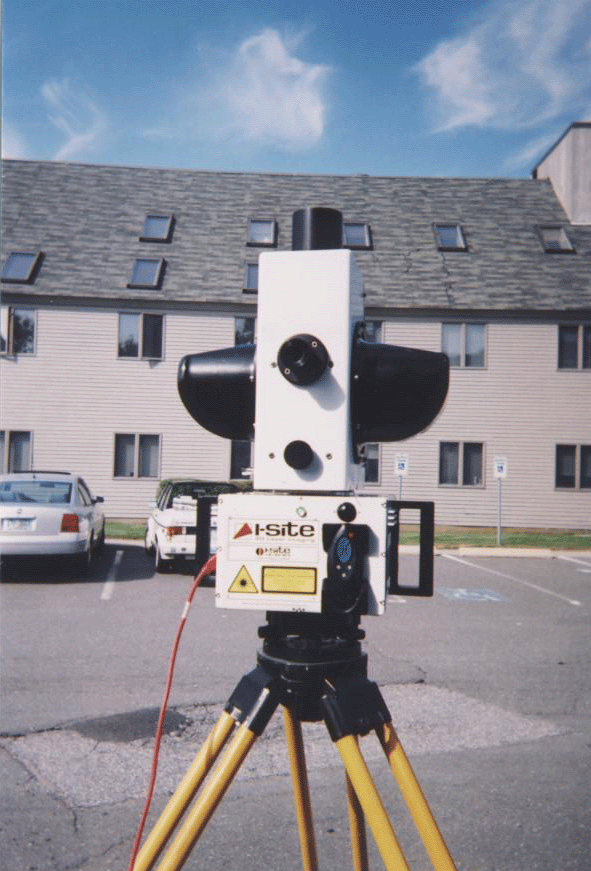Peter Johnson, general manager, I-SiTE Pty Ltd., New South Wales, visited our offices near Boston last week to show us their new I-SiTE 4400 time-of-flight laser scanner and update us on the company’s progress.Although the 4400 is I-SiTE’s first laser scanning hardware system, the company is no newcomer to the laser scanning market. It’s been selling its Studio software to the industry since 1999.
Weighing in at just 14kg including battery, the 4400 is designed for long-range measurements – up to 400 meters with a reported range accuracy of 50mm. No prizes will be awarded for guessing where the name of the device comes from: the instrument captures 4400 measurements per
second. The field of view is 80deg vertical by 360deg horizontal. The instrument features a digital panoramic camera which captures data at scan time and automatically registers the image data to the scan data. Some scans of the outside of our offices on the following pages demonstrate this capability. The 4400 has some features we’ve not seen before on other scanners, notably a 16X motorized telescope for backsighting and a red diode laser pointer which is aligned with the
telescope for use in underground survey.
Mining, topographic survey, forensic mapping
I-SiTE’s target market for this scanner is mining, topographic survey, and forensic mapping. Johnson reports they’ve sold eight units and shipped four of these since May. The first customer was the Australian Federal Police. Other customers include the Australian Transport Safety Bureau and the Worsley Aluminas Joint Venture mine Boddington Bauxite Mine. If you want one soon, get in line. Current production capacity is limited to one per month. List price for the 4400 is US$133,000, which includes a license of I-SiTE studio and the first year’s maintenance and software upgrades. Annual maintenance is $12,000 going forward.
I-SiTE has 18 employees, 13 of whom are in engineering and development. The company is a division of parent Maptek Pty, which has approximately 200 employees and annual turnover of approximately $21 million. I-SiTE serves the North American market through its Denver office. Currently the company does not have a service center in the U.S., but according to Johnson, it expects to establish one in the coming year through one of its distributors.Why another time-of-flight scanner?
Why another time-of-flight scanner? There were both technical and business drivers behind the decision, according to Johnson, who says the number one design criterion was to enable fast data capture. “If you’re going to make it better, you don’t make it slower.” I-SiTE began developing the 4400 in 2000. Half of the approximately A$5 million development cost for the device was funded by a grant from the Australian government.
I-SiTE sees an opportunity to develop smarter scanners with more intelligence applied in the data acquisition phase. We were unsuccessful in extracting the detailed product plan for I-SiTE’s future
developments, but Johnson hinted the company sees opportunity going forward in such areas as varying the capture resolution according to what’s being surveyed. Some scanners do this today by first recognizing targets as bright spots, then capturing higher-density data in the vicinity of these targets in order to precisely locate the targets for survey control and registration purposes.
As for the business drivers to develop a new scanner, Johnson says the company saw an opportunity to enjoy higher margins by manufacturing its own devices. The company, which long sold Riegl scanners, plans to continue supporting these customers with its software. According to Johnson, the company has no plans to sell Riegl scanners in the future.






